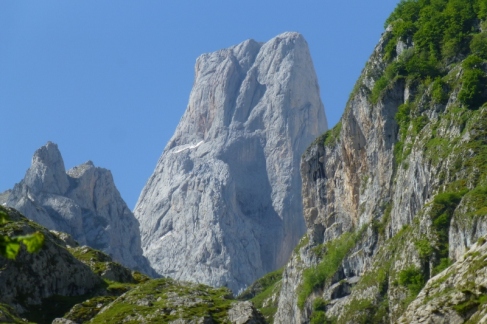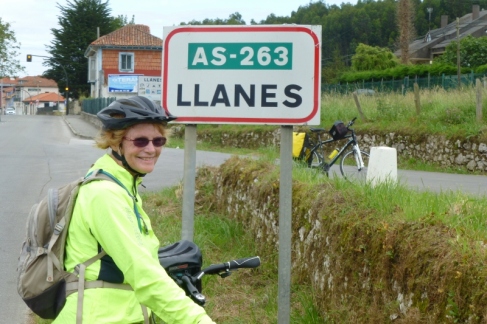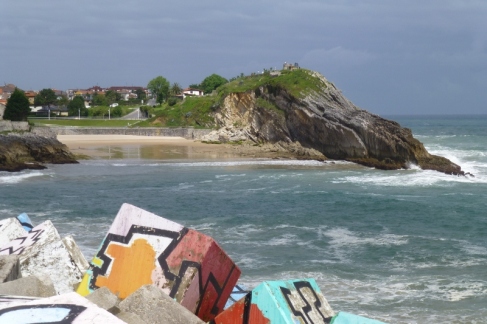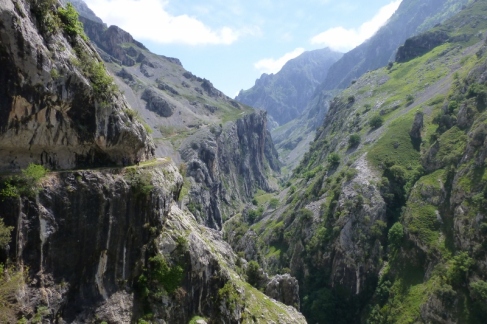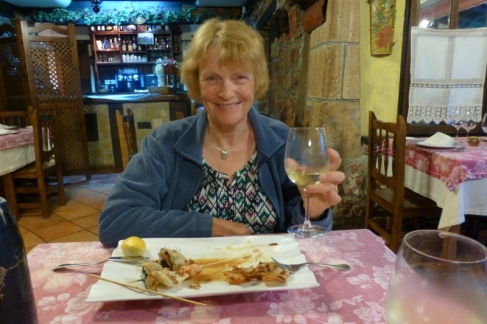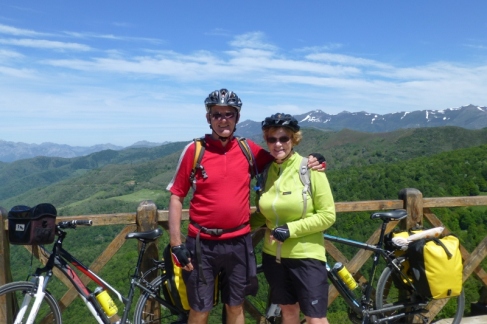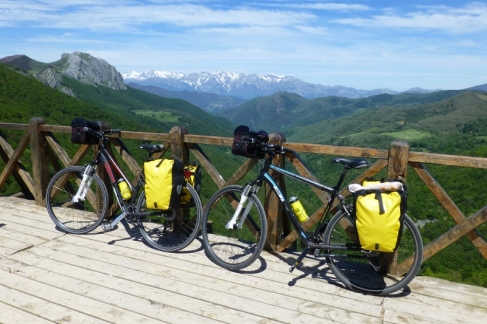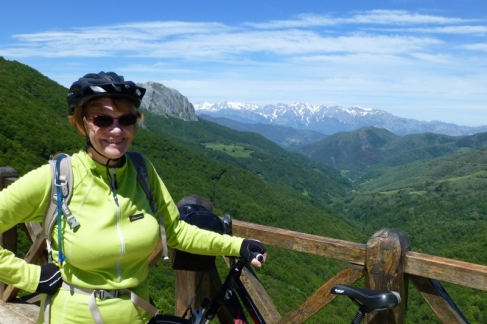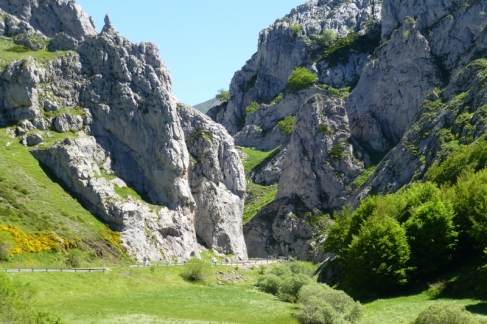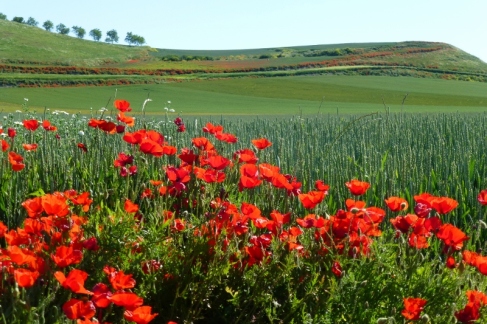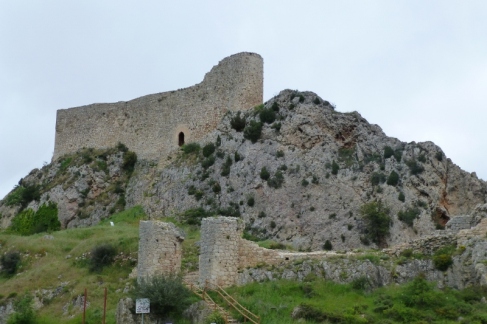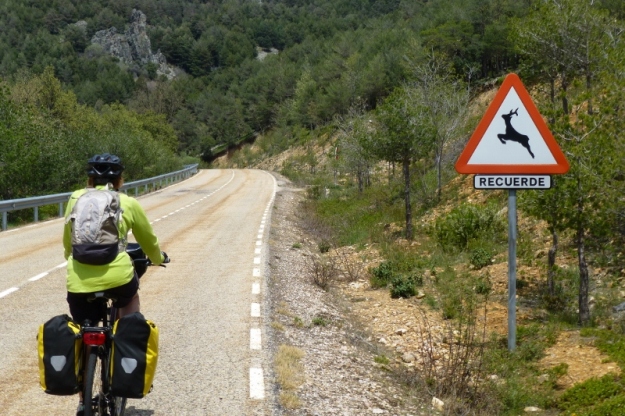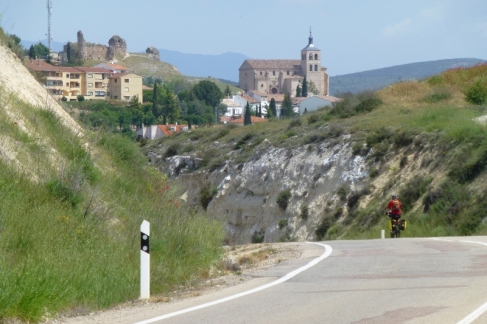After nearly 800 kms of riding, up and over many hills and through a varied cross section of the geography and scenery of northern Spain – with the Picos de Europa a real highlight – we have finally arrived at the coast. Our last serious day of riding was preceded by an ascent of a section of the Picos de Europa in a Funicular, followed by a walk up to a look-out point for an impressive view of the Naranjo de Bulnes (see photo below) This spectacular rock face looks very much like Federation Peak. Then the final 37 kms to Llanes taking in one more 400 metre hill and avoiding a second one. And, finally, the sea and the end of a journey.
As always, when you travel in a foreign country, you only skim the surface but we do feel that travelling on the bikes has brought us into closer contact with locals and put us in a position where we have observed a way of life that does seem to have remained the same for a long time. We have done a lot of sitting in bars making a beer or a glass of wine last a long time, just like the old men playing cards to while away the long afternoons. Even the older women seem to frequent the bars, which are often more like cafes serving alcohol, and essential social hubs in every town and village. The women are usually dressed in their best, their hair coiffed and stiffened with hair spray, and drinking coffee and chatting.
The small shops are also a source of fascination; they have small fronts that seem to disappear behind doors and shutters when they close for the long afternoons of siesta. Small Charcuteries (delicatessens), Carnicerias (butchers), Panaderias (bakers), Pescaderos (fishmongers) are tucked in next to houses and when their doors are open they’re crammed with lots of enticing food items. The variety of meats, sausages and cheeses are amazing and a lot of it is incorporated into their cooking for flavour. And the bread, fifty varieties of sliced loaves in Australia but here it’s pan – crispy crusted breadsticks – and everyone buys it and carries it about and eats it and they serve it in thick slices in restaurants as part of every meal. The only variety seems to be in length, and an occasional ciabatta style alternative. Not good for the waistline!! The three course menus in the evening, with wine and food included (about $30 for two) have also done some damage there. Sadly, all the bike riding doesn’t seem to have worked it off.
We have been surprised that the beaches at Llanes are only a couple of tiny sandy coves, but the cliffs that stretch either side are very impressive and the spray from the pounding waves quite spectacular. Our hotel room also looks down on one of the small beaches and it’s been pleasant to listen to the waves and watch the tourists determined to sunbathe and swim even though it’s cloudy and quite cool. Onwards now to Bilbao by bus and then San Sebastian where we pick up a hire car and do some driving and walking in the Pyrenees.
Naranjo de Bulnes (in the Picos de Europa)
Arriving in Llanes
La Playa de Sablon (Our hotel window looked down on this beach and the painted blocks are huge cubes of cement keeping the sea from eroding the harbour)

